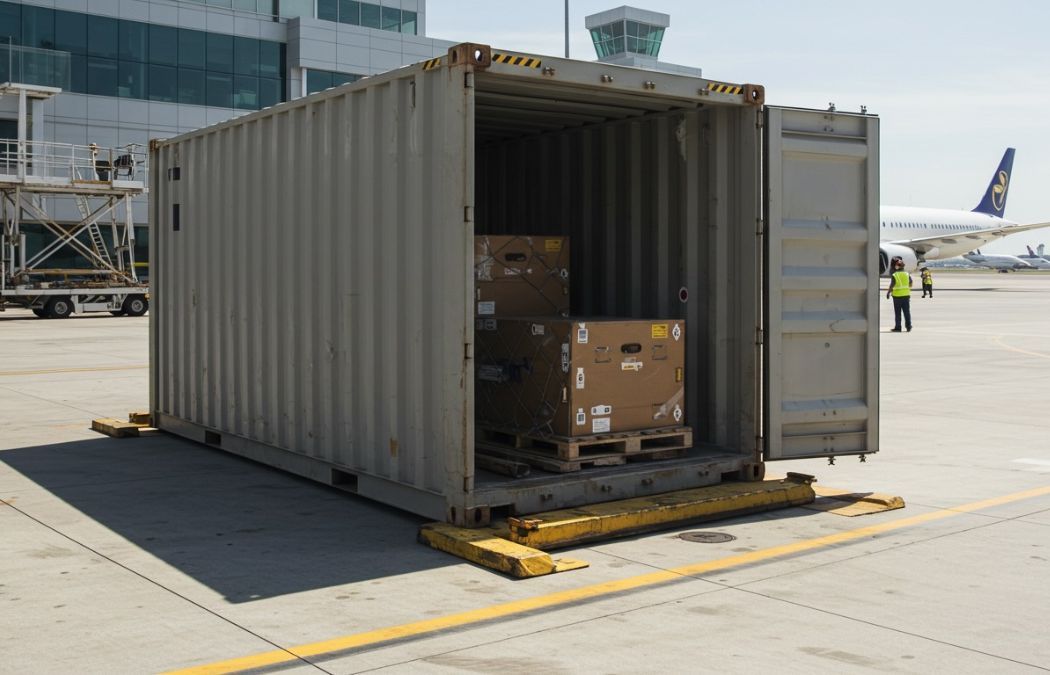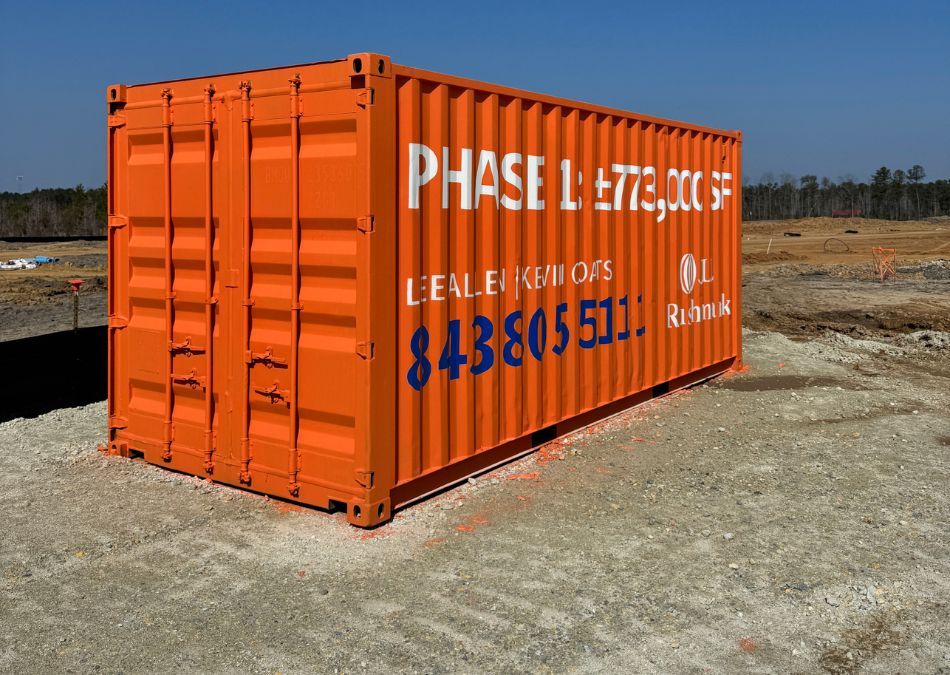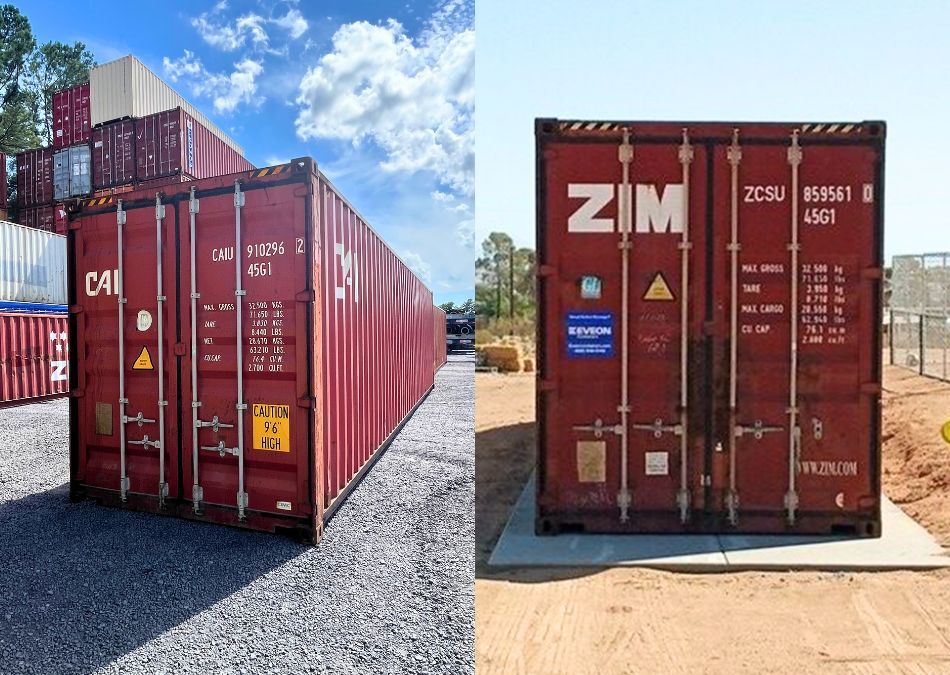SPRING SALE: Receive $100 Off Per Container
Building the Perfect Foundation for a Shipping Container
Discover the best foundation options for your shipping container—gravel, dirt, or concrete. Learn how to build a stable base that protects your investment and extends container life.


Top Foundation Options to Keep Your Shipping Container Stable and Secure
Like everything in life, establishing the proper foundation is vital. When it comes to setting up a shipping container—whether for storage, branding, or shelter - building the right foundation is critical to making sure the container works properly. Without a solid, level base, you risk structural issues, water damage, and problems with opening and closing container doors. Let’s break down some of the best options for building the perfect foundation for your shipping container: gravel, railroad ties, compact dirt, and concrete pads.
Why Foundation Matters for Shipping Containers
Shipping containers are designed to handle immense weight and withstand extreme conditions—but only when properly supported. A level, stable foundation ensures:
- Structural integrity
- Easy door operation
- Proper drainage
- Longevity of the container and its contents
Whether you’re setting a container down temporarily or planning a more permanent solution, your foundation needs to be done right the first time.
1. Gravel Foundation for Shipping Containers
A gravel pad is one of the most popular and cost-effective foundation options for shipping containers. It provides excellent drainage and is relatively simple to install.

Key Benefits of a Gravel Base:
- Natural drainage: Prevents water pooling under the container, reducing rust risk.
- Flexible and affordable: Less expensive than concrete and easier to adjust.
- Quick to install: Minimal excavation and setup time.
How to Build a Gravel Foundation:
- Clear and level the ground
- Excavate a few inches deep, depending on soil conditions.
- Add geotextile fabric to prevent weed growth and soil mixing.
- Fill with crushed stone or coarse gravel (round gravel not recommended).
- Compact thoroughly with a plate compactor.
- Ensure the surface is level before setting the container.
2. Compacted Dirt Foundation
For a temporary or ultra-low-budget solution, a packed dirt foundation may be sufficient. But it’s crucial to understand the limitations.

Pros of a Firm Dirt Base:
- No material costs: Just use what's already there
- Quick setup: Ideal for temporary or short-term container placement
Cons and Considerations:
- Poor drainage can lead to water pooling and corrosion
- Shifting or settling over time can cause the container to become unlevel, or trap condensation under if not properly placed.
- Not ideal for heavy loads or permanent setups
Improving a Dirt Foundation:
- Use a plate compactor or roller to create a firm, stable surface
- Add a thin layer of fine gravel or sand for better leveling
- Check frequently for settling or erosion, especially after rain
- Use a leveler to make sure the ground is flat as possible
3. Concrete Pad Foundation: The Gold Standard
If you're planning a permanent installation or expect heavy foot traffic, equipment, or loading/unloading activity, a concrete pad is the most durable and long-lasting option.

Advantages of a Concrete Foundation:
- Ultimate stability: Won’t shift or settle.
- Highly durable: Handles extreme weights and weather.
- Perfectly level: Ideal for long-term use or when stacking containers.
How to Build a Concrete Pad:
- Excavate and frame the area based on your container’s dimensions.
- Install rebar or mesh for reinforcement.
- Pour at least 6 inches of concrete for proper strength.
- Smooth and level the surface while wet.
- Allow to cure for a minimum of 7 days before placing the container.
Optional Tip: Incorporate a slight slope (1–2%) away from the center to help with water runoff.
Choosing the Right Base
The best foundation for your shipping container depends on how long it will stay, your budget, local soil and climate conditions, and what the container will be used for.
- For temporary setups, a well-compacted gravel base is a fantastic balance between cost, performance, and ease of installation.
- For short-term storage, firm packed dirt might do the trick, but it’s far from ideal for anything long-term.
- For permanent installations, nothing beats the strength and longevity of a properly poured concrete pad.
No matter which option you choose, the foundation you lay will directly impact the functionality, stability, and lifespan of your shipping container. A good base is always a good start for extending the life and functionality of your Conex box.
For more information and tips about maintaining the health of your used container from Eveon, read our news & blogs.

